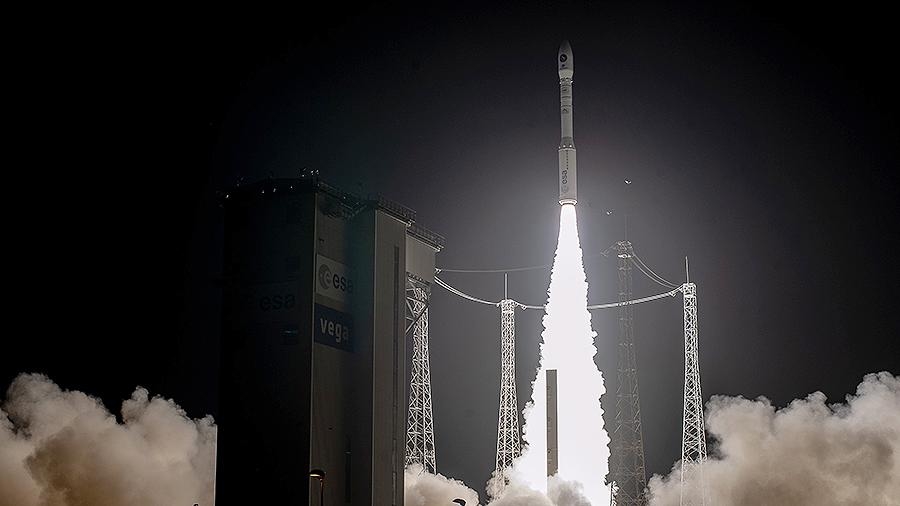Press-center
Press-center

VEGA ROCKET WITH THE UKRAINIAN UPPER STAGE ENGINE ORBITED PRISMA SPACECRAFT
On March 22, 2019 at 3:50 Kiev time (March 21, 22:50 local time) small Vega rocket carrying Italy’s PRISMA Earth observation satellite, was successfully put into orbit from Kourou spaceport, French Guiana.
Vega rocket was developed by the European Space Agency (ESA) together with the Italian Space Agency (ASI) to place payloads ranging 300 to 1500 kg into low near-Earth orbit (depending on the orbital parameters).
Yuzhnoye SDO developed and Yuzhmash production plant manufactured RD-843 main engine, installed on the Vega rocket’s upper (fourth) stage.
Reliable operation of the Ukrainian RD-843 engine, which was scheduled for 3 burns according to the flight program, contributed to the success of the mission,.
PRISMA is a small satellite of the Italian Space Agency, to be used for the Earth observation. Major objective of the satellite is to demonstrate its new powerful imaging payload. It combines hyperspectral and black-and-white imagers. Hyperspectral imager will operate across 239 spectral bands, from visible-light and near-infrared (VNIR) to short wave infrared bands (SWIR). PRISMA will aid with the monitoring of land use, natural resources, water resources and environmental situation.
Satellite weight is 879 kg. It was placed into the circular sun – synchronous orbit, 614 km above the Earth’s surface. Expected operation time of the satellite is 5 years.
This is the 14th launch of the Vega rocket for the past seven years. PRISMA is the 70th satellite, launched by the French company.
